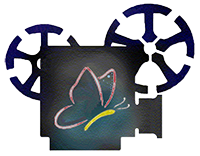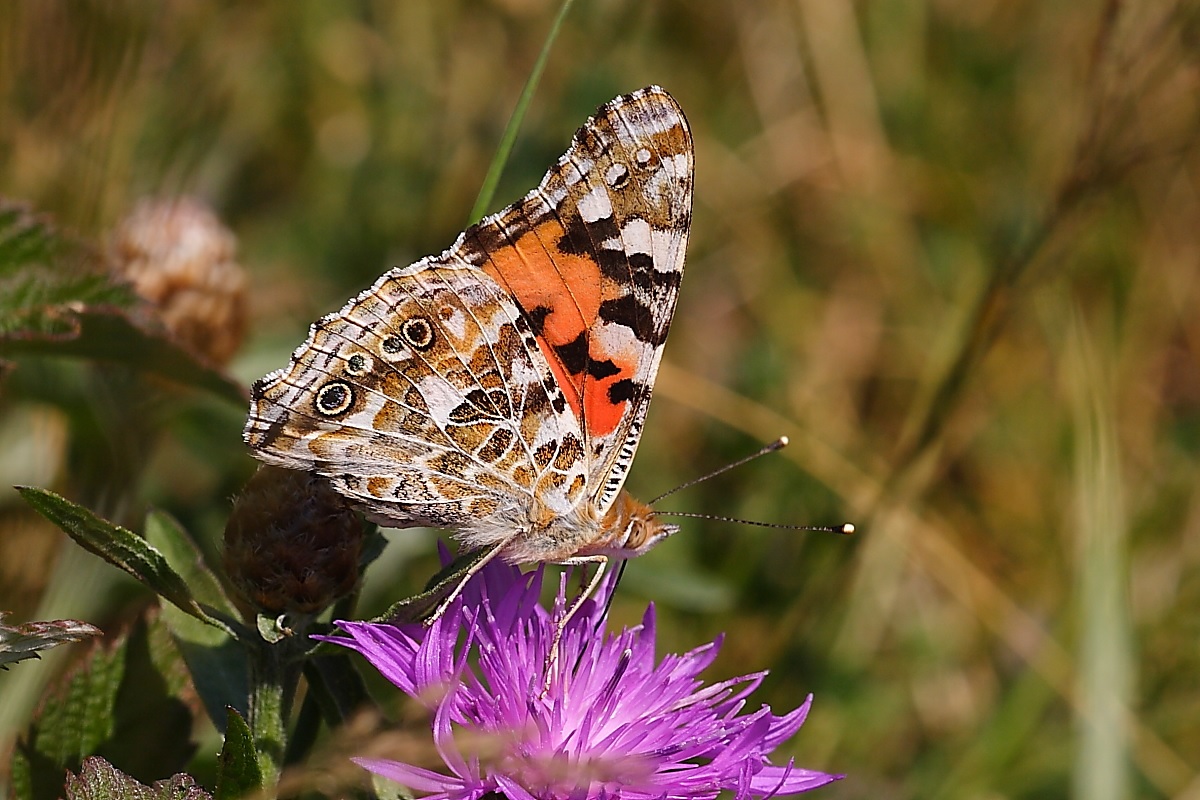

The painted lady (Vanessa cardui)
The painted lady (Vanessa cardui Linnaeus, 1758) is a migratory butterfly, which overwinters in North Africa and migrates from March onward to Europe to escape the heat of summer, drought and parasitism. Migrating butterflies move in groups and have a fast and powerful flight, which can reach speeds of 25 to 30 km/h. During its trip, it must frequently stop to rest and to feed on nectar in order to rebuild energy reserves. This butterfly likes open and sunny places and appreciates many thistles, but also various other flowers it finds all the way through its journey. The host plants are diverse, but in the South, the female lays especially on thistles and deposits only a single egg at a time. The light-green egg becomes darker due to changes in embryonic development. After about a week, the caterpillar hatches. The young caterpillars create silk shelters in which they take refuge against possible predators. They feed in, or next to their shelter. At the 4th stage, this caterpillar becomes more and more reddish and travels greater distances. The colouring of caterpillars of this species is very variable. Just before pupation, the caterpillar becomes lighter in colour and sets out to find a suitable place to undergo its transformation. Some pupate on the host plant and others in the leaf-litter. The butterfly appear The journey is undertaken over 2 or 3 generations, mating takes place and gives birth to butterflies that will give birth to offspring who will make the return journey. The butterfly appears between 7 and 17 days later, depending on the month of emergence, latitude and weather conditions.
